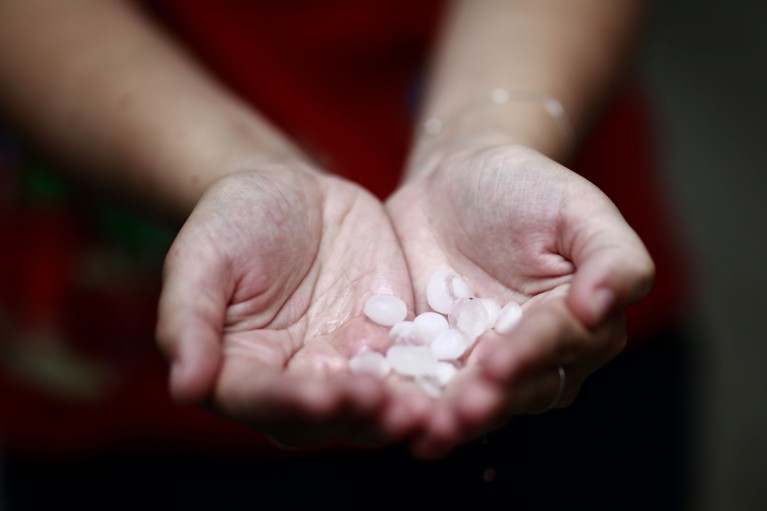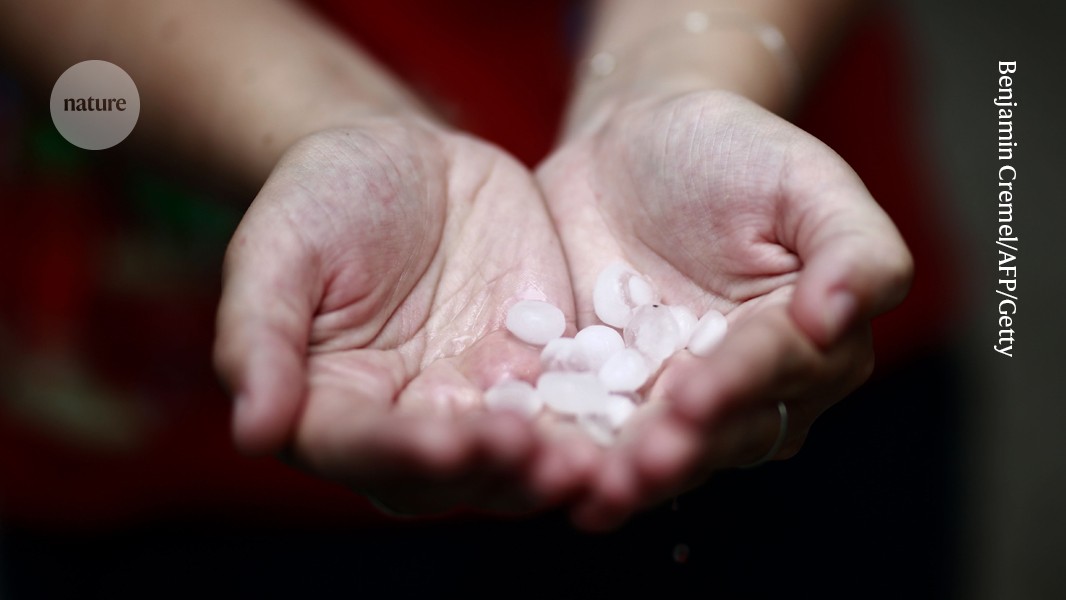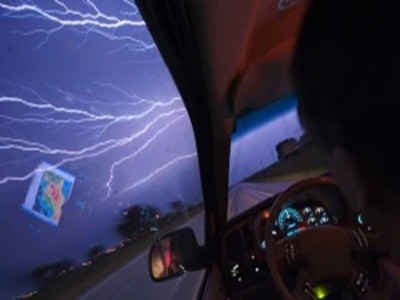
A storm-chasing campaign will help scientists to understand why some storms yield large, damaging hailstones and others generate no hail at all. Credit: Benjamin Cremel/AFP/Getty
Hail regularly pulverizes crops and smashes up homes around the world — but it remains a scientific mystery despite its menace. Researchers still don’t know why some storms make monster hailstones, whereas others drop only harmless fragments of ice.
Now meteorologists hope to clear up some of the unknowns about hail, which causes tens of billions of dollars in damage annually in the United States alone. Over a six-week period, dozens of scientists will chase ice-dropping storms across the US Great Plains, in the biggest US study devoted to hail in four decades.
“We have so few observations that that any observation of any hailstorm is going to give us new and exciting information,” says Rebecca Adams-Selin, an atmospheric scientist at the consultancy firm Atmospheric and Environmental Research in Lexington, Massachusetts. She is lead principal investigator of the field campaign, known as ICECHIP.
Hailstone nurseries
Hail forms during strong thunderstorms when upward-flowing winds carry raindrops to higher, colder regions of the atmosphere, where the drops freeze. Depending on how the hailstone is blown around during the storm, it can either grow or shrink before it falls to the ground. But the environment in which this happens is something of a black box.
ICECHIP is studying how baby hailstones form and accumulate ice as they move through a thunderstorm, and what conditions create the most damaging hail. The instruments researchers are using include a funnel-and-freezer combination to gather and store hailstones, panels studded with pressure sensors that convert hailstone impacts into kinetic energy, and a drone that appeared in last year’s tornado-chasing film Twisters.
Night-time storm chasers stalk their prey on US Plains
The results should help people to better prepare for damage from incoming hail, says Ian Giammanco, a meteorologist at the Insurance Institute for Business and Home Safety in Richburg, South Carolina. That might mean designing better hail-resistant roofs, putting hail netting over vulnerable fruit trees or adjusting the angle of solar panels to allow hail to bounce off them. Such measures could help to contain the rising economic toll of hail damage. “This exponential growth in loss is unsustainable, and we’ve got to start figuring out ways to take a bite out of it,” he says.



